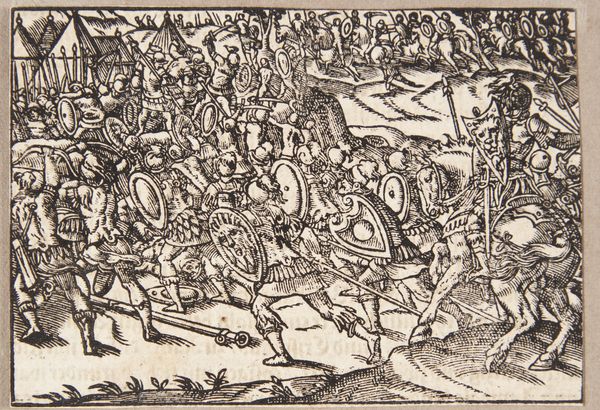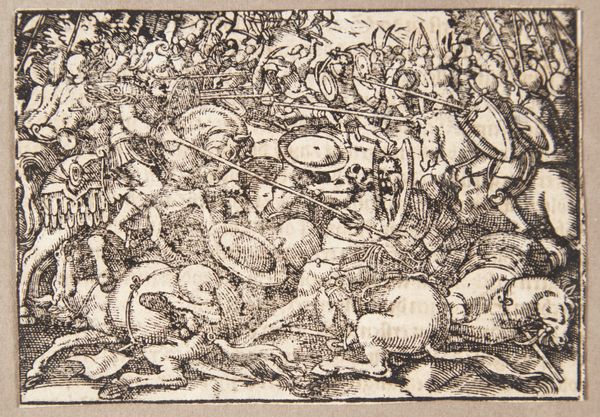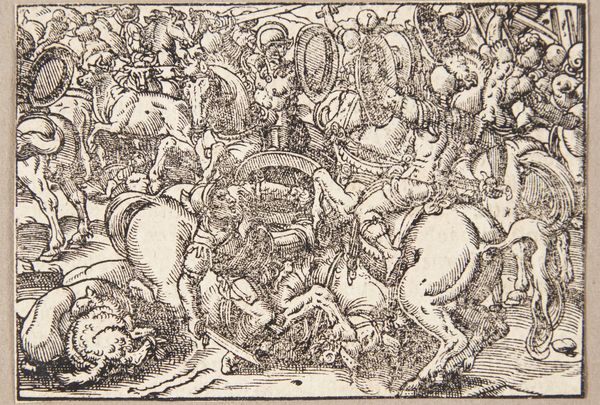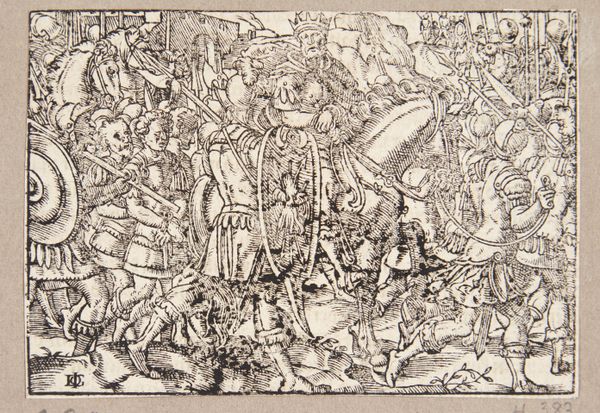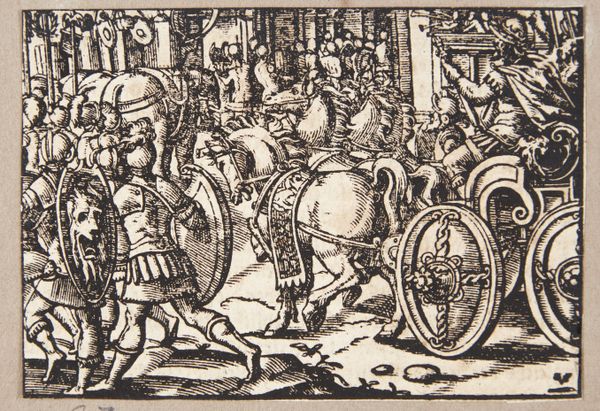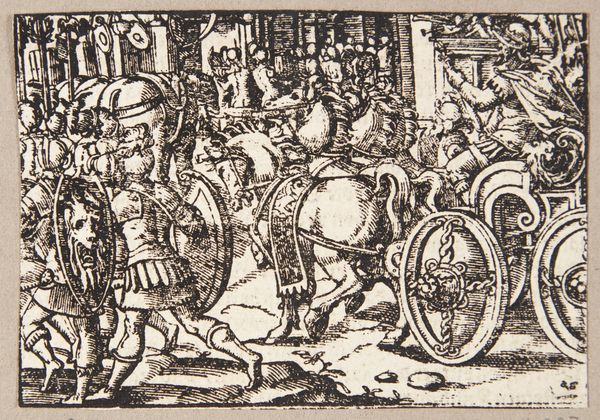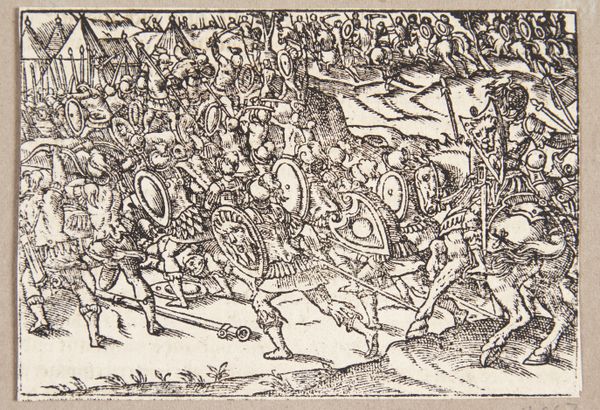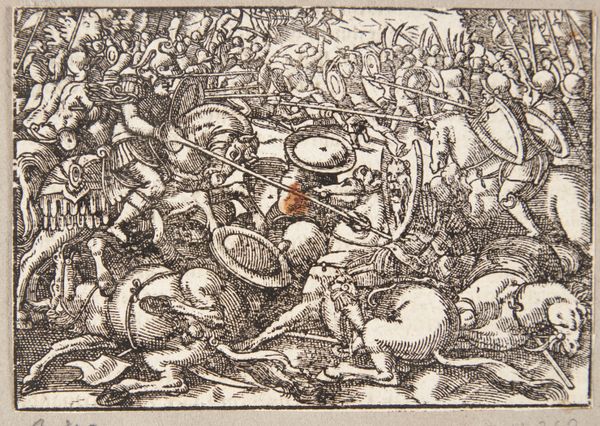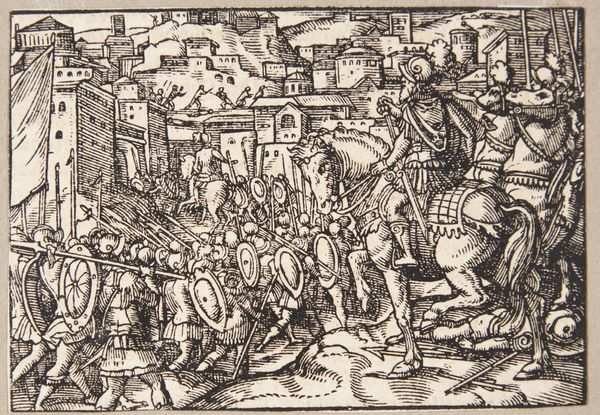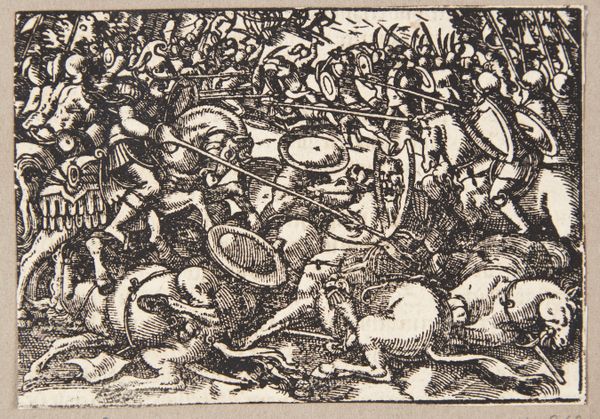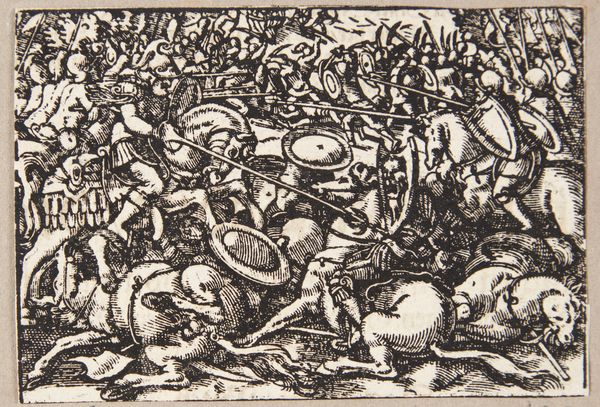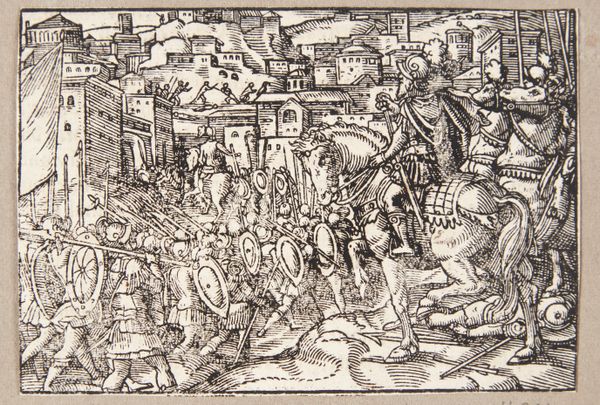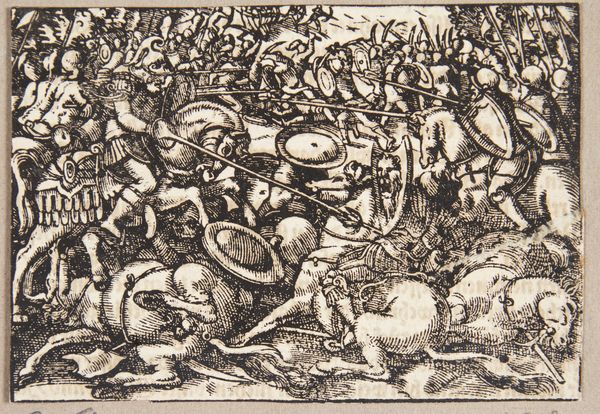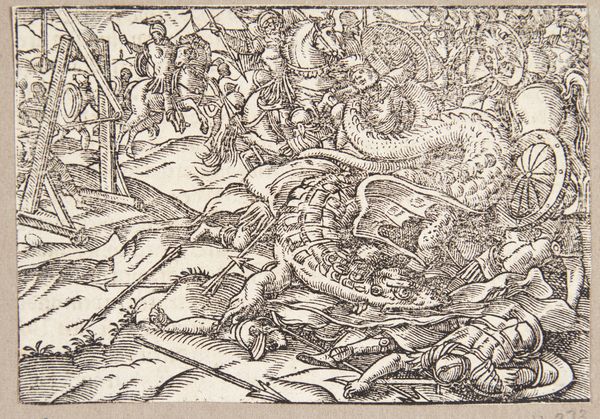
print, woodcut
#
narrative-art
# print
#
figuration
#
woodcut
#
history-painting
#
northern-renaissance
Dimensions: 75 mm (height) x 105 mm (width) (bladmaal)
Curator: This incredibly detailed print is "Tullia k\u00f8rer over sin fars lig," or "Tullia Driving Over Her Father's Corpse," a woodcut made around 1574 by Tobias Stimmer. Editor: Well, it's certainly dramatic! The intense activity and close detail give a brutal feeling. You really feel the violence of the event being depicted. Curator: Yes, and that brutality speaks volumes about power structures. Stimmer captures Tullia, daughter of the Roman king Servius Tullius, driving her chariot over his body after she and her husband conspired to murder him. This print would have been part of a larger series depicting virtuous and villainous women. It's steeped in Renaissance humanist thought regarding morality. Editor: Right, these didactic prints aimed to both instruct and warn the public about the consequences of tyrannical ambition, particularly within the domestic sphere. What strikes me is how active and present Tullia appears, enthroned almost callously above the carnage, which in turn is set within a surprisingly vivid town scene. I would be interested in examining it alongside portrayals of powerful female figures by artists like Artemisia Gentileschi. How do their political contexts compare? Curator: Exactly! Looking at this now through a feminist lens allows us to ask several questions about power. How does Stimmer subtly depict Tullia? Her action defies natural social laws—parricide, regicide committed by a woman. The story circulated as a warning to women to stay within social norms. The question remains: how did this print affect a woman who beheld it, living in the sixteenth century? Editor: Furthermore, what specific visual cues does Stimmer employ that mark this image as especially didactic for its early modern audience? I note the prominent wheels of Tullia's chariot, how those circles intersect—almost crush—the rigid, geometric patterns surrounding the body of Tullia's father. We're getting very close here to an object lesson about earthly versus divine order. Curator: I agree. It invites considering how this image functions within its social environment and how our reading might shift as social dynamics evolve. It’s a constant conversation. Editor: Indeed. A visual testament to power, both asserted and critiqued, perpetually shifting its meaning across centuries and cultural contexts.
Comments
No comments
Be the first to comment and join the conversation on the ultimate creative platform.
